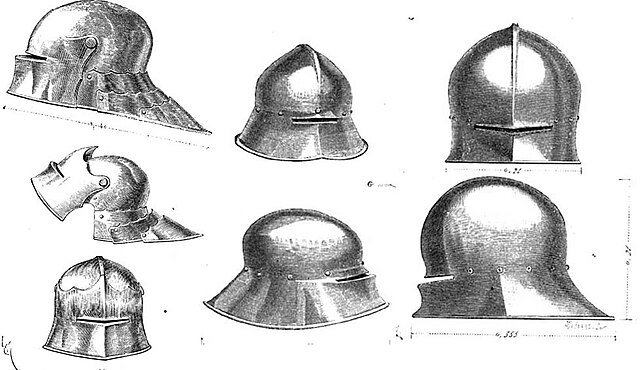The sallet was a combat helmet that replaced the bascinet in Italy, western and northern Europe and Hungary during the mid-15th century. In Italy, France and England the armet helmet was also popular, but in Germany the sallet became almost universal.
Light Italian celata (sallet) c. 1460, covered with velvet and decorated with repoussé gilt copper edging and crest
A German sallet with bevor , c. 1480–1490.
Sallet from c. 1460 in the "English-Burgundian" style, in many ways intermediate between the Italian and German forms
German sallets
The bascinet – also bassinet, basinet, or bazineto – was a Medieval European open-faced combat helmet. It evolved from a type of iron or steel skullcap, but had a more pointed apex to the skull, and it extended downwards at the rear and sides to afford protection for the neck. A mail curtain was usually attached to the lower edge of the helmet to protect the throat, neck and shoulders. A visor was often employed from c. 1330 to protect the exposed face. Early in the fifteenth century, the camail began to be replaced by a plate metal gorget, giving rise to the so-called "great bascinet".
Bascinet without accessories.
Hounskull visor attached by a brow-mounted pivot (klappvisier).
Hounskull visor attached by side-mounted pivot.
A great bascinet with a rounded visor.








